Madge Evers is one of 12 artists selected as a Gallery 263 2023–2024 Small Works Project artist. This project presents artwork in flat files at the gallery and on our website. Visit Evers’ Small Works Project page →
What kind of art do you make?

I make works on paper of all sizes that explore our entangled dependence on a rapidly changing environment. The human desire to shape the natural world has brought increasingly chaotic results. Plants and fungi offer alternative perspectives. My work examines the strength of adaptation and coexistence through the shapes and patterns found in the natural world.
Can you tell us a little about yourself?
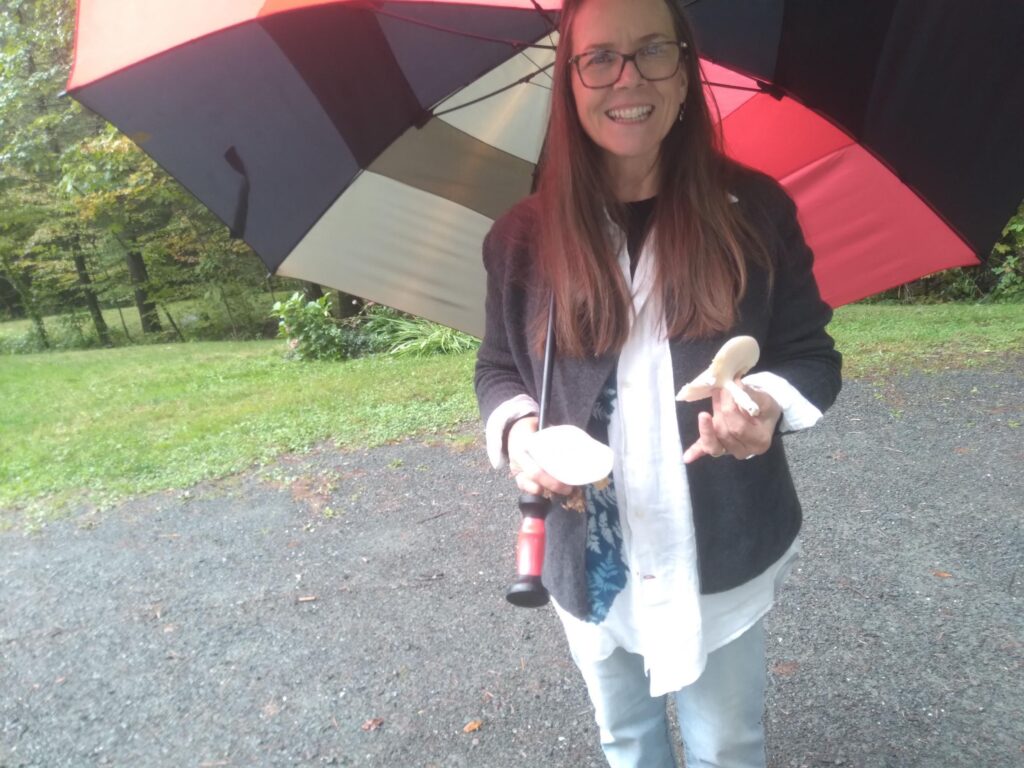
During a 25-year hiatus from art-making, I created a family, taught English and reading, and learned a ton about plants, growing cycles, and the beauty of composting. I believe everything is connected; my family, the garden, and my students inform and inspire everything I do, including the imagery I create. In 2015, I started making mushroom spore print art with mushrooms I cultivated in my garden. Those first images were a revelation – they were sculptural, photographic, familiar, ephemeral – and led to my experimentation with the mushroom spore print form. I continue to incorporate new mediums, including the cyanotype, an alternative photographic process whose magic and and immediate gratification I now share in workshops.
Can you tell us about the work you have on view in your flat file drawer at the gallery?
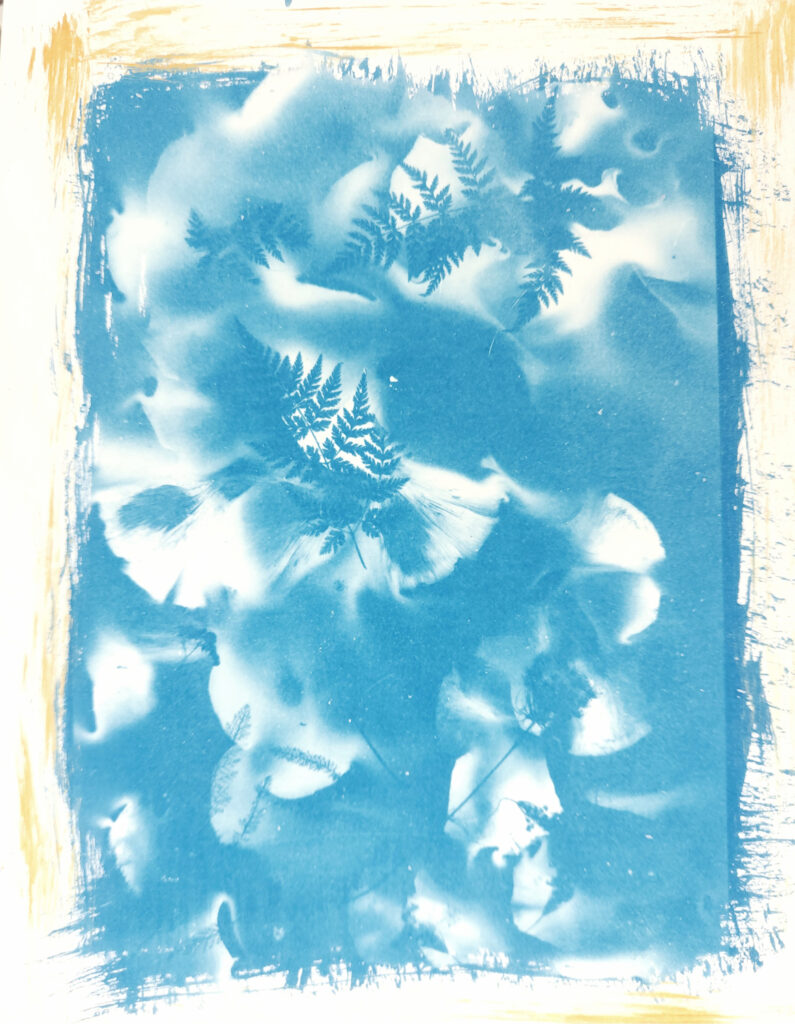
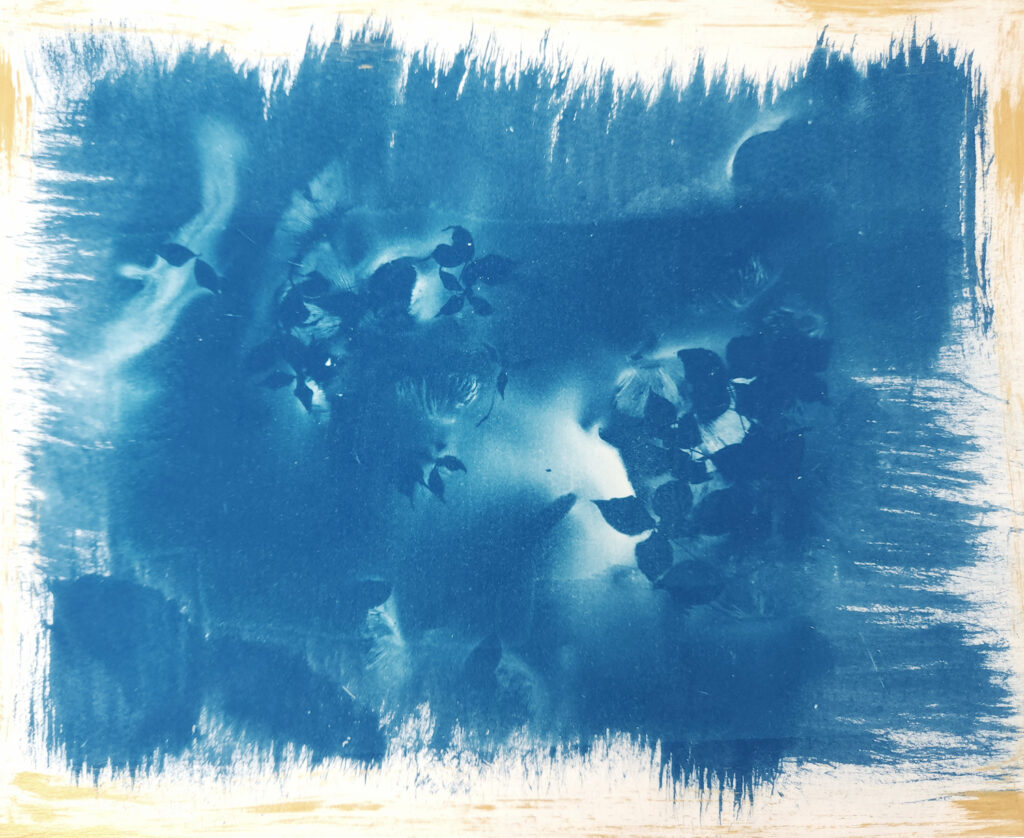
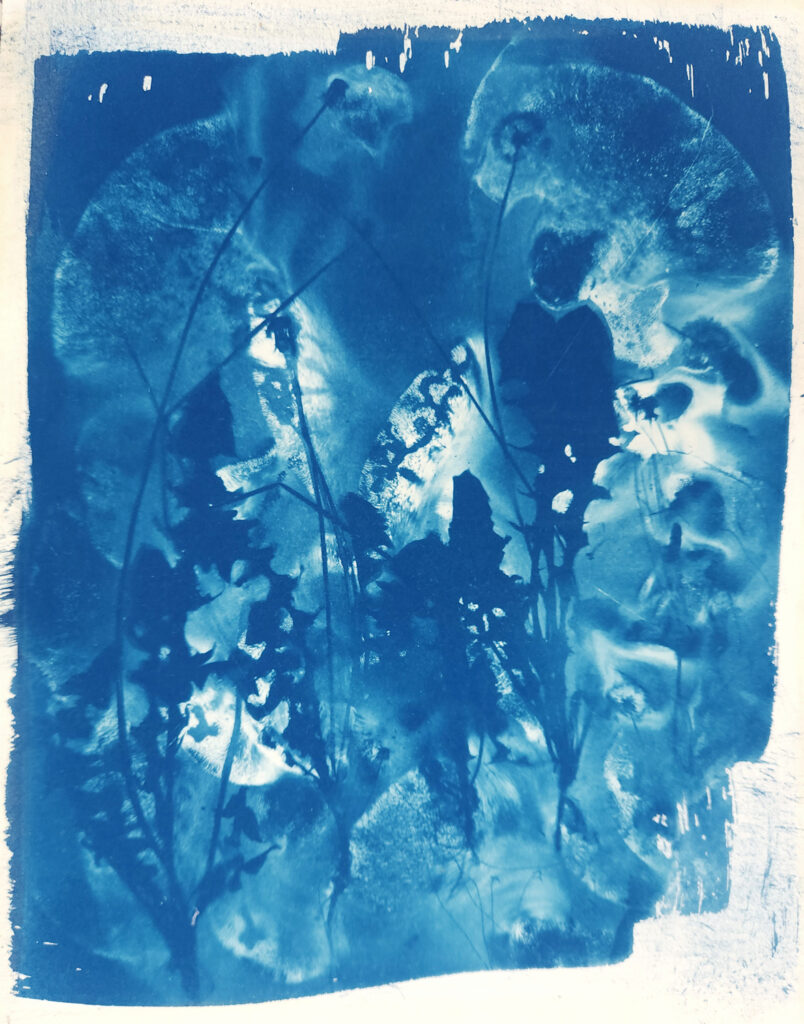
The work in the flat file are cyanotypes made with the negatives of my mushroom spore print compositions.
Can you tell us more about creating mushroom spore prints?
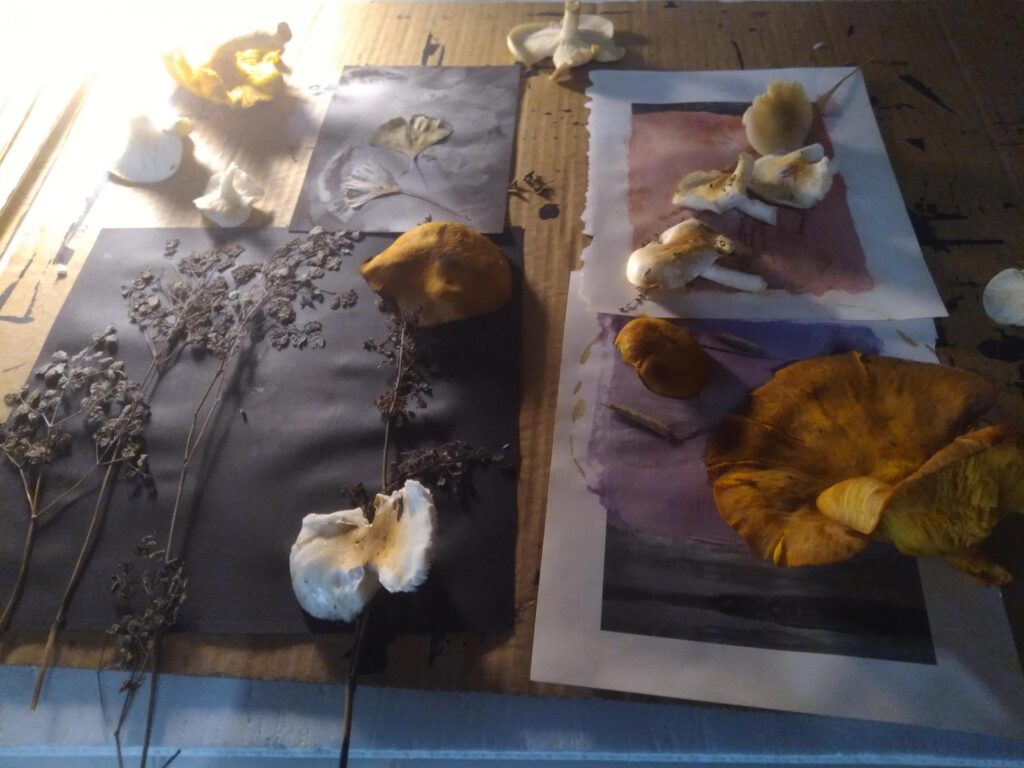
Spores are tiny reproductive particles made within a mushroom’s gills or pores. When ready, and at astonishing speeds, mushrooms release millions of powdery spores into the air. The spores fly and float; they sometimes travel the world in rain clouds and sometimes land close to home. In whatever way they move, spores contain a fungi’s dna and act as tiny seeds. People sometimes ‘catch’ spores on paper to help identify a mushroom; different species have different colored spores. This identification process is called a spore print. To make a spore print, remove a mushroom’s stem and place the cap, gill or pore side, down onto a piece of paper; cover with a cup or bowl. After 6-12 hours, lift the bowl, remove the cap, and if conditions are right, voila! The mushroom’s spores will leave a photographic-like image of the mushroom’s gills or pores on the paper. My innovation is that I’ve adapted the mushroom spore print as an art form. I work with fungi that I forage or grow to make abstract works on paper that portray the natural world’s familiarity and strangeness. When I first began working with mushrooms, I was uncertain. I wondered about the legitimacy of spores as an art medium, knew there’d be naysayers, but was profoundly inspired by the mysterious and beautiful imagery.
My reliance on mushrooms to produce and release their spores has helped me to see spore prints as art that is created interdependently with mushrooms, my unwitting collaborators.
Where do you make your work?

I work from a studio in my home.

I create mushroom spore prints, which can be messy and supports lots of insects, in my garage.
What historical and contemporary artists inspire you?
While I find social media to be a bit overwhelming, I draw lots of inspiration from the artists with whom I’ve become friends on Instagram. Current artists that inspire me are Meghan Rieppenhoff, Celeste Dupuy-Spencer, and Anselm Kiefer; writers Rebecca Solnitt, Robin Wall-Kimmerer, and Suzanne Simard. Botanist and cyanotype artist Anna Atkins is an historical inspiration, as are all the people who wanted to make art but could not because of social or economic demands.